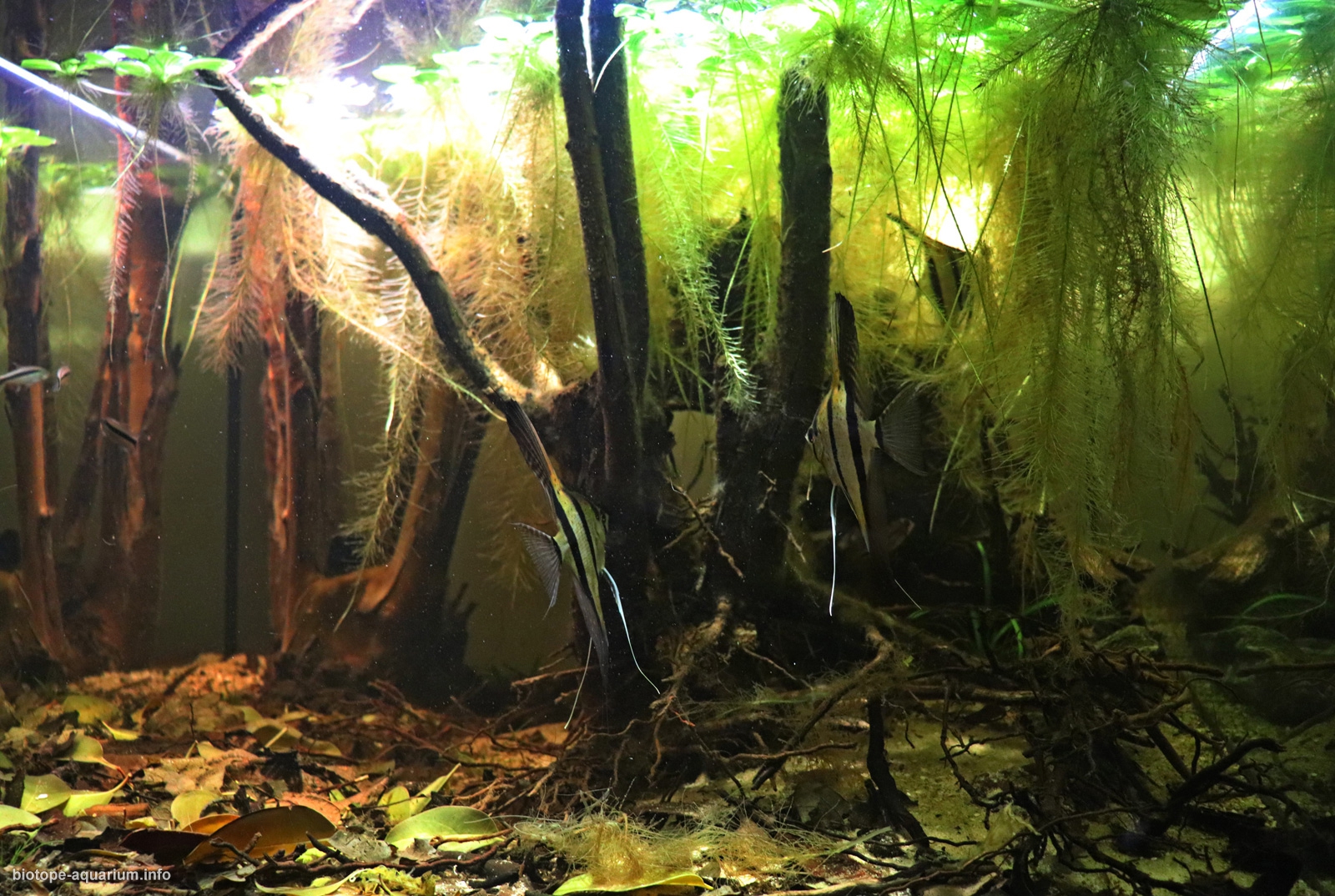Rio Nanay, Rio Itaya, Rio Mamon meeting, Iquitos
71st place in Biotope Aquarium Design Contest 2018
![]() Turkey. Muhammet Saylavcı
Turkey. Muhammet Saylavcı

Volume: 120 L
Dimensions: 55x50x45 cm
List of fishes: Pterophyllum scalare, Corydoras trilineatus, Apistogramma allpahuayo, Apistogramma cacatuoides, Thayeria boehlkei
List of plants: Sagittaria subulata, Eleocharis parvula, Pistia stratiotes
Description of decorations: Driftwoods and beige quartz sand looks like in the documentary video the nature biotope.
Description of equipment: haqos expro 500 slim filter, 3x18w t8 grolux and aquastar.
Water parameters: Temperature is 27 C, Ph is 6.65, Tds is 130-150 ppm.
INFORMATION ABOUT BIOTOPE
Description of the area surrounding the biotope: Iquitos, is the capital city of Peru’s Maynas Province and Loreto Region. The largest metropolis in the Peruvian Amazon, east of the Andes, it is the sixth most populous city of Peru. It is known as the “capital of the Peruvian Amazon.” The city is located in the Great Plains of the Amazon Basin, fed by the Amazon, Nanay and Itaya rivers. The Itaya River is a tributary of the Amazon River via the Nanay River[citation needed] in northern Peru. The Itaya flows alongside the city of Iquitos and the district of Belén. The Nanay River is a river in northern Peru. It is a tributary of the Amazon River, merging into this river at the city of Iquitos. The lower part of the Nanay flows to the north and west of the city, while the Itaya River flows to the south and east. Other nearby settlements on the Nanay River include the villages of Santo Tomás, Padre Cocha, and Santa Clara. River’s lenght is 315 km (196 mi). This rivers nourishing the area, its little arms and drainages are in wealth in terms of living creatures. İts a great water habitat with different speices of Characiform,Corydoras, Siluriform, Locaridae, Cichlid, Serasalmus/
Description of the underwater landscape of the biotope: The vegetation in the region gives birth to new living spaces during the rainy season. The waters rising from the roots of the coastal trees combine with the fresh leavespoured out by the intensity of rainfal. The overturned branches of terresial plants or the underwater parts from a paradise where the fish with the substrate is stored and reproduced.
Description of the parameters of the habitat: The average temperature is 27 C, ph varies 6 to 6.6 depending on the season. TDS is 20-30 ppm.
List of fishes and invertebrates occurring in the nature biotope: İts a great water habitat with different sipeces of Characiform, Siluriform, Locaridae, Cichlid, Serasalmus.
Apistogramma allpahuayo, Apistogramma cacadu, Apistogramma bitaeinata sp rio nanay, Apitogramma atahualpa, some speices of Characiform, Several Corydoras speices and other cichlids.
List of plants found in the nature biotope: Peruvian amazon and arms are wealth in terms of plants but, underwater flora is weak.Some echinodorus speices ,and cosmopolitan plants, Pistia stratiotes as.
Threats to the ecology: Here, as in everywhere, human beings continue to harm nature. This arealike huallaga river drowning, also gets ist share from environmental pollution.İn aditioni these watersheds are threatened by the dam works in South America.
Sources of information:
https://opefe.com/waterchem.
https://en.wikipedia.org/wiki/
Comments of the members of the jury of Biotope Aquarium Design Contest 2018

This cannot be a sustainable tank for these fishes. The volume simply is too low to give them a good home.
